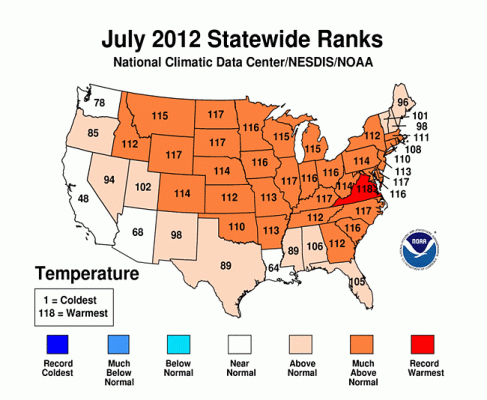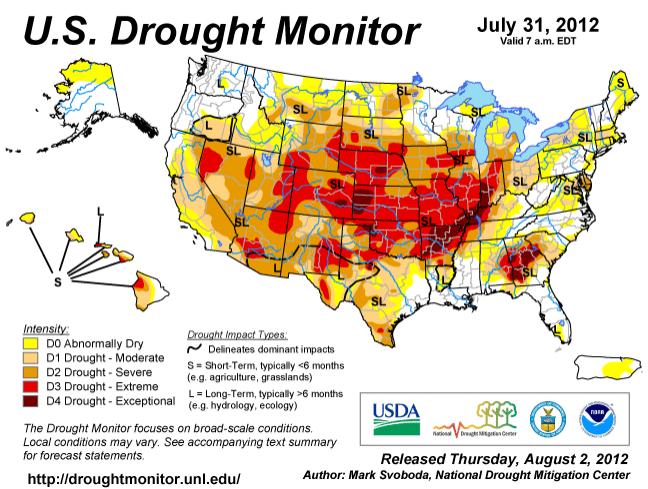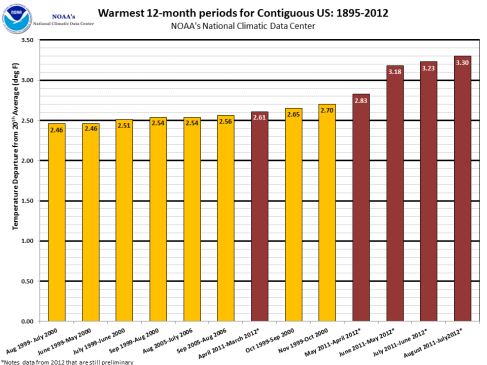Cool northerly long shore wind tamps down the unseasonable heat at Avalon Pier as the ocean remains relatively flat.
All posts tagged hot weather
Lake Atlantic at Avalon Pier
Posted by robertscribbler on March 25, 2023
https://robertscribbler.wordpress.com/2023/03/25/lake-atlantic-at-avalon-pier/
Feels Like 80s at Bathhouse OBX
Small waves, backsplash and summer like conditions at Bathhouse, OBX.
Posted by robertscribbler on March 25, 2023
https://robertscribbler.wordpress.com/2023/03/25/feels-like-80s-at-bathhouse-obx/
Over 90,000 Americans Sign Petition For Climate Change Question At Debate
Since 1988, every Presidential debate has included the issue of climate change. Yet this year, in a year when Arctic sea ice fell to levels nearly 50% below 1988, in a year when the entire Greenland ice sheet experienced melt, in a year when scientists are saying a historic drought was made worse by climate change, in a year of record fires around the globe and during a year when Atlantic tropical storms are more than twice as numerous as during a regular season, the issue of climate change has not come up once.
This is nothing short of travesty. It should have been an issue critical to each debate, something as important to our economy and future as jobs creation and the budget deficit. Yet one candidate, Mitt Romney, is on record saying he doesn’t even believe in the mountain of scientific evidence behind human-caused climate change. And in all the debates, thus far, no question on the issue has been posed.
Perhaps the moderators do not feel that 75 billion in climate change damages via the current US drought is a subject worthy of discussion. Or perhaps these same moderators are happy to ignore the fact that the UN has declared the world on the brink of a food crisis, should any other ‘unforeseen events’ take place?
Looking at the above compilation of debates on the issue of climate change, it would seem that we have ignored the issue for far too long and that the increasingly severe weather and damage is now upon us. And, at such a time, we have now decided the issue isn’t worthy of discussion? To draw such a conclusion would truly reveal us to be a stupid, short-sighted and callous race. For the failure to deal with this problem does not just affect each of us now living. It impacts the lives of all people, all creatures yet unborn. It affects the life, all life, of our world. And we are brutish, terrible, and, yes, wholly maniacal if we ignore it.
Please join those who have signed the petition for a climate change question at tonight’s debate:
http://www.change.org/petitions/ask-about-climate-change-at-the-presidential-debates
More than anything, this issue is one that affects us all.
Links:
Posted by robertscribbler on October 22, 2012
https://robertscribbler.wordpress.com/2012/10/22/over-90000-americans-sign-petition-for-climate-change-question-at-debate/
‘Year of Epic Melt’ Continues to Hunt New Records in Arctic, Highlights Ongoing Reality of Global Warming
For the Arctic, this has been the year of epic melt. Greenland broke its record for melt in early August, more than a month before melt normally ends, and Arctic Sea ice has been tracking at daily record low levels since the end of July. Now, every few days seems to bring with it a new major record. Just yesterday, sea ice area broke its all-time record low and today sea ice area continued to show losses.
The Arctic sea ice monitor Cryosphere Today showed sea ice area at a new record low of 2,844,000 square kilometers for the date. This is 61,000 square kilometers below the previous record low and with more than three weeks of melt remaining, final values will almost certainly be even lower.
To put things in perspective, the 2.84 million square kilometer ice area measurement for today compares to a sea ice area low for the end of summer in 1986 of about 5.5 million square kilometers. The size of the current ice sheet floating over polar waters is nearly half that of what it was just 26 years ago.
The measure for sea ice extent is also rapidly falling. Values from both the NSIDC and the Japanese Space Agency show sea ice extent measurements at around 4.5 million square kilometers. This is less than 300,000 square kilometers above the record set in 2007. At the current rate of melt, a new record low for sea ice extent will likely be seen within the week.
Sea ice volume also continues to track toward new record lows.
And according to Neven over at the Arctic Ice Blog, a new low for Northern Hemisphere snow cover has also been reached.
If the volume and extent values fall, then all previous records for Arctic melt including Greenland, Sea Ice Area, Sea Ice Extent, Northern Snow Cover, and Sea Ice Volume will have been broken this year.
This year of epic melt has occurred at the same time as the hottest July for Northern Hemisphere land masses ever recorded. Russia has experienced its hottest summer in at least 170 years while the US has experienced its hottest 12 months ever on record. The heat has also ignited massive fires and resulted in the worst drought since 1956 in the US.
In the Arctic, sea ice melt usually ends sometime around mid September. So we have weeks to go before we can declare an end to a season that has clearly set in bold for all the world to see these two words:
GLOBAL WARMING.
Links:
http://arctic.atmos.uiuc.edu/cryosphere/
Posted by robertscribbler on August 21, 2012
https://robertscribbler.wordpress.com/2012/08/21/year-of-epic-melt-continues-to-hunt-new-records-in-arctic-highlights-ongoing-reality-of-global-warming/
National Climate Data Center: “Drought Expands to Cover Nearly 63% of the Lower 48; Wildfires Consume 2 Million Acres”
The hottest month in US history has brought with it a number of wide-ranging impacts, according to reports from the National Climate Data Center.
Wildfires
During the month of July over 2 million acres were consumed by forest fires across the country. In Oregon, the Long Draw fire consumed 560,000 acres in a single blaze. This was the largest fire ever to affect Oregon since record-keeping began in the 1840s. Other large fires affected the heartland which is currently sweltering under the most intense heatwave on record.
Severe Impacts to US Agriculture
According to the NCDC, the nation’s primary corn and soybean belt experienced its eighth driest July, its third driest June-July, and its sixth driest growing season (April-July) since records began in 1895. This drought has had severe impacts on US crops forcing many farmers to simply plough their ailing fields back into the soil, abandoning crops in hopes that next year will be better.
Fully half of the US corn crop is in poor to very poor condition with 37% of the US soybean crop also in the lowest rating assigned by the US Department of Agriculture. Due to these impacts, it is expected that US corn output will fall by 13% and US Soybean output will fall by 11%. These declines are expected in spite of the US having planted its largest corn crop in 75 years. The result is that corn prices are flirting with record high prices at over $8 per bushel.
Area of Severe Drought Doubles
The area of the Nation suffering from extreme to exceptional drought more than doubled from 10% at the end of June to 22% at the end of July. Areas hardest hit were the heartland of the United States: Oklahoma, Kansas, Illinois, Missouri, Iowa, Arkansas, Nebraska.
Hottest 12 Months in US History For the Past Four Months Running
Just last month, the hottest 12 month period in US history was recorded. Wait one month, and the previous record set in June has been broken again. So, as of this report, the US is currently experiencing ongoing increases on top of a long period of already record high temperatures. In fact, the same thing happened in April and May as well. We’ll have to see if August breaks the record 3.3 degrees Fahrenheit departure from average temperatures set in July.
Global Warming Link Established
Earlier this month NASA scientists established a link between extreme summer heating events and human caused global warming. They did this by tracking temperatures since 1951 and showing that under the current regime of ever-increasing levels of CO2, extreme summer heating events like the one experienced this year are now 30 times more likely to occur than they were sixty years ago. Though a handful of oil company funded scientists have taken issue with this assessment, the data presented by NASA couldn’t be clearer as it tracks the increasing frequency of these extreme events.
“This is not some scientific theory. We are now experiencing scientific fact,” NASA scientist James Hansen told The Associated Press in an interview.
Links:
Posted by robertscribbler on August 9, 2012
https://robertscribbler.wordpress.com/2012/08/09/national-climate-data-center-drought-expands-to-cover-nearly-63-of-the-lower-48-wildfires-consume-2-million-acres-36/
NASA: Extreme Summer Heat, Agricultural Impacts, “Causally Connected to Global Warming.” This Summer’s Drought Event Result of New Potential for Extremes.
A new report by NASA links extreme summer heating events to global warming. The report, which drew temperature data from 1951 to the present showed that extreme events like this year’s US drought, the extreme drought in Russia in 2010 and last year’s Texas drought are now 30 times more likely to occur than they were in 1951-1980. The above curve, produced by NASA, shows a comparison of summer temperature distributions between 2001-2011 and 1951-1980.
Though the report takes into account 2011 data, researchers were quick to point out that the current summer drought and impacts to US agriculture were also linked to human caused global warming. “This summer people are seeing extreme heat and agricultural impacts,” James Hansen, Head of NASA’s GISS, noted. “We’re asserting that this is causally connected to global warming, and in this paper we present the scientific evidence for that.”
The report defined an extreme heating event as the highest summer temperatures experienced by 1% of Northern Hemisphere land masses in the period of 1951-1980. What the research found was that from 2006-2011, fully 10% of Northern Hemisphere land masses experienced extreme summer temperatures. The report also noted that more extreme events were occurring with much greater frequency. Events that previously happened once every 300 years were happening once every ten years.
Hansen says this summer is shaping up to fall into the new extreme category. “Such anomalies were infrequent in the climate prior to the warming of the past 30 years, so statistics let us say with a high degree of confidence that we would not have had such an extreme anomaly this summer in the absence of global warming,” he says.
Links:
http://www.nasa.gov/topics/earth/features/warming-links.html
http://blogs.nasa.gov/cm/blog/whatonearth/posts/post_1344022702866.html
Posted by robertscribbler on August 6, 2012
https://robertscribbler.wordpress.com/2012/08/06/nasa-extreme-summer-heat-agricultural-impacts-causally-tied-to-global-warming-this-summers-drought-event-result-of-new-potential-for-extremes-4/






















